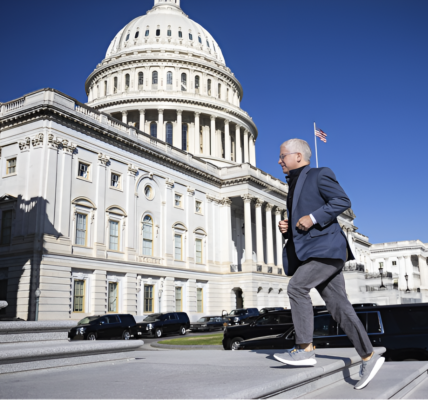
In fiscal year 2024, the United States resettled 100,034 refugees—its highest total in three decades and nearly nine times the number admitted in FY 2021. This achievement signals a remarkable rebound, but it also underscores a critical truth: refugee resettlement in America is deeply influenced by the president’s priorities, making it vulnerable to political shifts.
Since its inception in 1980, the U.S. refugee resettlement program has helped more than 3 million people find safety and a new start. Legally, refugees are defined as individuals unable or unwilling to return to their home countries due to a well-founded fear of persecution based on race, religion, nationality, political opinion, or membership in a particular social group. While the program is rooted in humanitarian principles, the number of refugees admitted each year has fluctuated significantly, largely due to the president’s authority over admissions policy.
Unlike other areas of immigration where Congress sets annual visa limits, refugee admissions are determined by the president in consultation with Congress. “More than in other areas of immigration, the president has wide latitude to determine the maximum number of refugees admitted each year (and from where),” explains the Migration Policy Institute (MPI), a nonpartisan think tank. During Donald Trump’s tenure, refugee admissions were drastically slashed year after year, dropping to a historic low of 11,814 in FY 2020. Though President Joe Biden pledged to reverse this course, rebuilding the program proved challenging. Trump-era policies left resettlement infrastructure weakened, and it took years for Biden’s administration to increase actual admissions numbers to match the annual caps he set.
However, several key changes in 2024 helped accelerate the recovery of the resettlement program. Increased funding and technological improvements streamlined the refugee admissions process. Government agencies introduced digital case management and video interviews, reducing logistical hurdles and processing times. A notable innovation was the adoption of “concurrent processing,” where steps like medical checks and security screenings are conducted simultaneously, cutting wait times significantly.
Beyond operational upgrades, the administration launched new initiatives aimed at broadening refugee pathways. Safe Mobility Offices across Latin America were established to offer migration advice and guidance on refugee programs, expanding the U.S.’s outreach. The Welcome Corps initiative, another significant development, empowered U.S. citizens and permanent residents to privately sponsor refugees, easing the burden on government resources while increasing community involvement in resettlement efforts.
The need for such programs has never been more urgent. According to the United Nations, the global refugee population surged to 43.4 million in 2024—triple what it was a decade ago. With conflicts, climate crises, and political instability fueling displacement worldwide, the U.S. has both the capacity and responsibility to help. Moreover, refugees have consistently demonstrated their value to American society, contributing to local economies, revitalizing communities, and launching businesses at disproportionately high rates. Their contributions extend beyond cultural enrichment; they generate billions in federal, state, and local tax revenue.
Yet, the future of refugee resettlement remains uncertain. If Trump—or another candidate with similar policies—returns to the White House, the gains achieved under Biden could quickly be reversed. Trump has already hinted at plans to reintroduce restrictive policies and lower the admissions ceiling. While specific details remain unclear, analysts predict that refugee numbers would fall dramatically under a second Trump administration, further jeopardizing the resettlement infrastructure that has only just begun to recover.
The stakes are high. At a time when the world faces an unprecedented refugee crisis, the U.S. stands at a crossroads. The progress made under Biden demonstrates what’s possible with the right policies, but that progress is fragile. Whether America continues to serve as a beacon of hope for refugees—or turns inward once again—will depend on the outcome of the next election.
Abandoning this humanitarian mission would not only harm those seeking safety but also deprive America of the many benefits refugees bring. As history has shown, when given the chance, refugees don’t just survive in their new homes—they thrive, and in doing so, they strengthen the nation that welcomed them.




